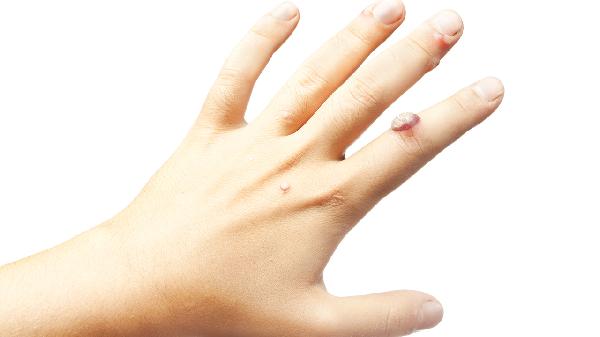Warts are skin surface growths caused by viruses, first mentioned in the "Internal Classic." They are commonly seen in children and young adults, with an incubation period of 1 to 3 months, and can spread by self-inoculation. The virus resides in the prickle cell layer, promoting cell proliferation and forming wart-like lesions. Common types include common warts, flat warts, molluscum contagiosum, and condyloma acuminatum. In traditional Chinese medicine, they are referred to as "wart eyes," "rat nipples," "atrophied tendon arrows," "thousand-day sores," "scab sores," and "regret sores," colloquially known as "skin tags" or "hard-headed flesh." So, what are the methods for diagnosing a wart infection?

Generally, it can be diagnosed based on clinical presentations. Other laboratory tests include gamma-interferon and interferon tests.
Tests for warts:
1. Introduction to Polymerase Chain Reaction (PCR):
Polymerase Chain Reaction is a method for rapidly amplifying specific genes or DNA sequences in vitro, hence also known as in vitro gene amplification. PCR technology mimics the natural DNA replication process, with specificity relying on oligonucleotide primers complementary to the ends of the target sequence.
2. Introduction to the Iodine Test:
The iodine test commonly uses iodides as contrast agents in cardiovascular, cerebrovascular, renal, gallbladder, bronchial, and X-ray imaging. The iodine test is used to detect cervical cancer, primarily identifying high-risk lesion areas to improve diagnostic accuracy.
3. Introduction to the Acetic Acid Test:
The acetic acid test, also known as the acetic acid white test, is a clinical method mainly used for diagnosing condyloma acuminatum, subclinical condyloma acuminatum, or latent HPV infections. Since condyloma acuminatum, subclinical condyloma acuminatum, or latent HPV infections are not always clinically typical or visible to the naked eye, applying acetic acid can turn them white, making the lesions more apparent. The purpose is to aid in the diagnosis and differential diagnosis of condyloma acuminatum.
























